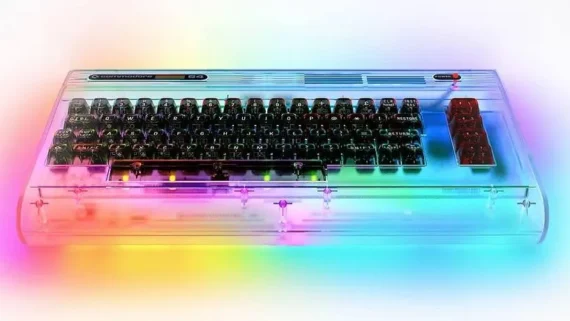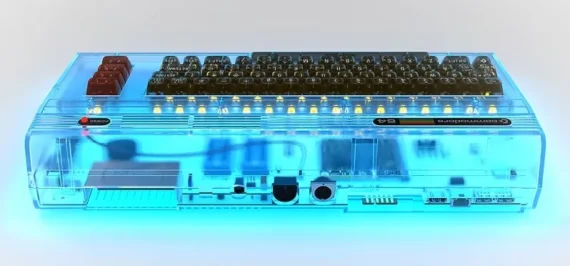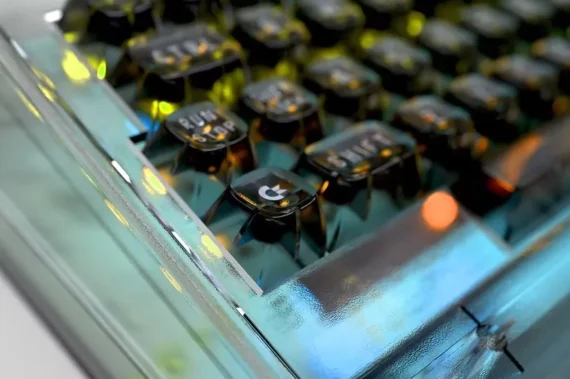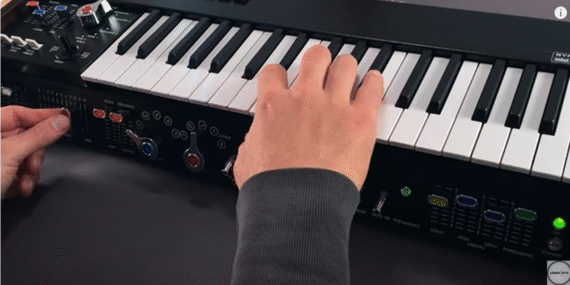The Commodore 64 Is Back, Packed With Extra Power For Chiptune Music Makers

Great news for electronic music makers of a retro persuasion, or those who are looking for something ‘new’ to try – the Commodore 64 is back.
Fans of the original’s much-loved SID chip can now get their hands on a brand new take on the classic.
Yes, no more trawling eBay and car boot sales for you. Now – courtesy of a reborn Commodore – you can purchase a perfect, new, improved 2025 incarnation of the best-selling home computer from 1982, and literally get back to the future.
The Commodore 64’s MOS Technology 6581 Sound Interface Device (better known as the SID chip) had a sound all of its own, breathing life into videogames and music programs and knocking the basic bleeps of its rival Sinclair ZX Spectrum into a cocked hat.
Musically the C64 certainly had the edge, and, armed with the new chip’s polyphonic power composers such as Chris Huelsbeck ran wild, creating genuine soundtracks for video games (do check out his legendary work on Turrican) for the first time.
By today’s standards the SID was distinctly limited with just three voices, but four waveforms, and a multi-mode filter gave the C64 a sound all of its own. So much so that in the years following the C64’s physical demise (and the death of the entire Commodore computer in 1994) countless emulators and hardware spin-offs have popped up to satiate those wishing to recreate that distinctive genre-defining ‘chiptune’ C64 sound.
And what better way to get a SID as part of your set-up than inside an entire faithful recreation of the C64, warts and all, in 2025!
The rebirth of Commodore comes courtesy of YouTuber Christian Simpson who originally only sought a licence to create an emulation but ended up buying the entire Commodore brand, its logos and the rights to all of its creations.
And his first hardware off the block (alongside a raft of T-shirts, sweatshirts and other branded retro goods) is the new C64 available in Basic, Starlight, and Ultimate Founders Edition forms.
The company now intends to begin shipping their first hardware in October of 2025.
“We’ve been sleeping for 30 years. Please excuse us,” the company says on its ‘new’ website. “Now we’re back, you know we had to start with the best-selling desktop computer of all time.”
The new computer features a modern AMD Xilinx Artix-7 processor running the show, alongside 128MB of DDR2 RAM and 16MB of flash memory – marked increase on the 64 KB of the original.
Rather than simply emulate the C64 in software, a programmable FPGA circuit replicates the full chipset meaning that original peripherals (should you still have some in a box in the attic) can plug in and work just as with the real thing.
In fact, the new Commodore promises that the new unit is compatible with “over 99%” of original soft- and hardware.

And while it sports a new, obligatory HDMI port for output, it still maintains the original cartridge slot and DIN-8 connectors. Plus – in a first for a C64 – USB ports A and C for the connection of keyboards and other modern hardware, alongside Wi-Fi and Ethernet.
It even comes with a USB stick containing 50 retro games and demos, including a whole new game in the Jupiter Lander series.
The Basic unit carefully copies the original beige of the original while the Starlight Edition features a transparent case with RGB lighting inside.

Top of the tree is the Founders Edition limited to a run of 6,400, which aims to copy the Golden Anniversary Edition, originally made by Commodore to celebrate the sale of its one millionth unit. This model features an amber-tinted case and gold-plated keys.
- Commodore 64 Ultimate: Basic Beige $299.99
- Commodore 64 Ultimate: Starlight Edition $349.99
- Commodore 64 Ultimate: Founders Edition $499.99
Find out more at the reborn Commodore site.



